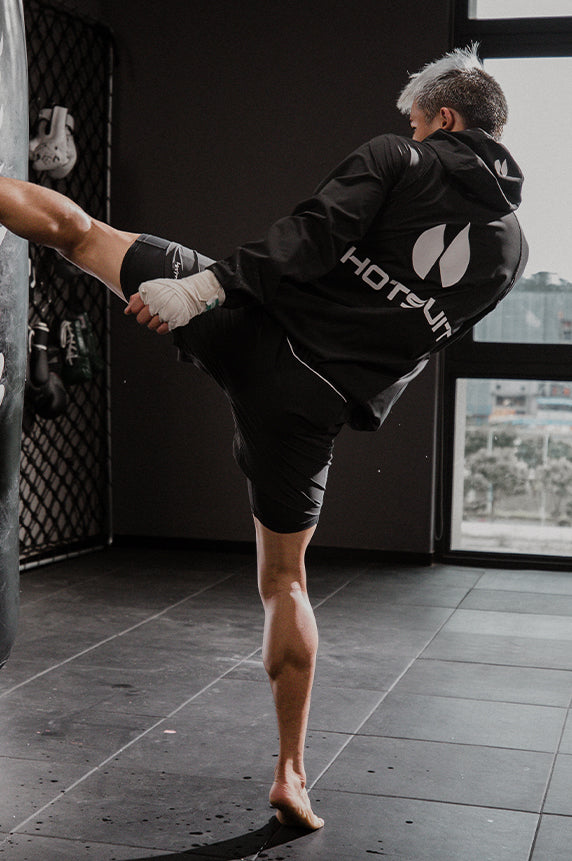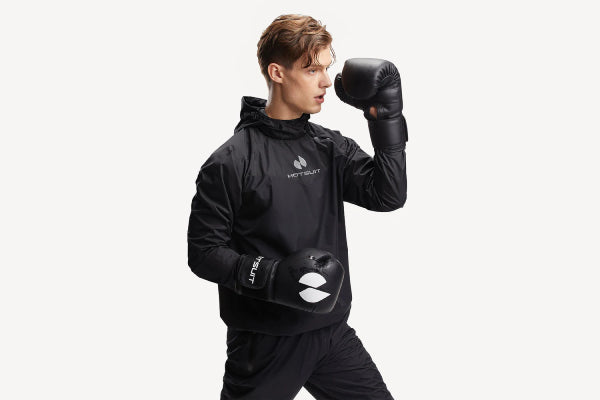For competitive athletes in sports like boxing, wrestling, and MMA, cutting weight is a critical part of preparation. However, the internet is filled with dangerous advice on kutting weight. A proper weight cut is a science, not a crash diet.

Master the art of weight cutting safely and effectively. This guide explains the scientific principles, outlines a strategic approach, and details the professional tools, like a modern sauna suit, that you need to succeed without compromising your health or performance.
What is Cutting Weight, and Why Do Athletes Do It?
First, let's answer the fundamental question: what is cutting weight? It is the practice of rapidly reducing body mass in the days leading up to a competition, primarily through the manipulation of body water and food volume.
The Competitive Advantage of Making a Weight Class
Athletes do this to qualify for a specific weight class. The strategy is to compete in the lightest possible category while being as strong and powerful as possible.
By rehydrating after the weigh-in, a fighter can enter the competition significantly heavier than the weight limit, creating a potential size and strength advantage over their opponent.
Distinguishing Between Fat Loss and Water Weight Manipulation
It is crucial to understand that weight cutting is not the same as long-term fat loss. True fat loss is a gradual process over weeks and months.
A weight cut is a short-term, acute process focused on shedding water weight. A successful strategy combines a lean physique (achieved through long-term fat loss) with a smart, temporary water cut.
The Science Behind Safe Weight Cutting
A safe and effective weight cut is a carefully orchestrated physiological process, not a last-minute panic. It involves distinct phases that work with your body's natural systems.
Phase 1: Long-Term Body Fat Reduction
The process begins long before fight week. The goal is to arrive at the start of the cut with a low body fat percentage. This ensures that the weight you need to drop is primarily water, not essential tissue.
This phase involves a consistent, healthy diet and a smart training regimen.
Phase 2: Short-Term Water Manipulation
This is the acute phase, typically the last 5-7 days before a weigh-in. It involves a strategic manipulation of water and sodium intake to encourage the body to shed excess water. This is a delicate process that must be done correctly to remain safe.
The Rehydration Protocol: Recovering for Competition
Perhaps the most critical phase is the post-weigh-in rehydration. The goal is to rapidly and efficiently restore the body's fluid and electrolyte balance to ensure you are at peak performance on competition day.

A poor rehydration strategy can negate all the hard work of the cut.
The Role of a Sauna Suit in Modern Weight Cutting
In the final hours of a weight cut, athletes often need to shed the last few pounds of water weight. A high-quality sauna suit is a modern, scientific tool for this purpose.
Accelerating the Final Water Cut Safely
A sauna suit works by trapping body heat during light exercise (like jogging or cycling). This elevates body temperature and stimulates intense sweating.
This allows an athlete to shed the remaining water weight in a controlled and predictable manner, which is much safer than sitting in a hot sauna for extended periods.
Why Modern Tech Fabrics Are the Professional's Choice
Gone are the days of risky plastic suits. Modern suits use advanced tech fabrics, like those found in the , which are more efficient at heat retention and far more durable.

This makes the process more comfortable and reliable—a key consideration for a professional athlete under immense pressure.
A Tool for Precision, Not a Shortcut for Procrastination
It's vital to view the sauna suit as a precision tool for the final stage of a well-planned cut. It is not a shortcut to make up for poor dieting or a lack of preparation.
Used correctly, it is an invaluable part of a modern athlete's weight cutting toolkit.
A Strategic Timeline for a 7-Day Weight Cut
Here is a sample timeline. Note: This is a general guide and should be adapted by a coach or nutritionist.
-
Day 7-4: Water Loading and Sodium Control - Begin by increasing water intake significantly and reducing sodium.
-
Day 3-2: Water Restriction and Carb Depletion - Sharply decrease water intake and limit carbohydrates.
-
The Final 24 Hours: The Role of Active Sweating - Use light exercise in a sauna suit to shed the final pounds of water weight.
-
Post Weigh-In: The Critical Rehydration and Refueling Plan - Immediately begin a structured rehydration and nutrition plan.
Cut Weight Like a Pro: Smart, Scientific, and Safe
Cutting weight is an integral part of combat sports, but it must be approached with intelligence and respect for your body. By combining a long-term fat loss plan with a short-term, scientific water manipulation strategy, you can make weight safely and effectively.
Common Questions About Cutting Weight
How much weight is it safe to cut? Most experts agree that cutting more than 5-8% of your body weight through dehydration can be dangerous and detrimental to performance. A smaller, well-managed cut is always the safer and more effective option.
Will cutting weight affect my performance? If done improperly, absolutely. Severe dehydration can drastically reduce strength, endurance, and cognitive function. However, a well-executed cut followed by a thorough rehydration protocol aims to minimize these effects.
What are the biggest mistakes to avoid when cutting weight? The biggest mistakes include waiting until the last minute, using extreme methods like diuretics or spitting, and having a poor rehydration plan. A lack of preparation is the root of most dangerous weight cutting practices.
How is this different from a regular weight loss diet? A regular diet focuses on creating a sustained calorie deficit for gradual fat loss. A weight cut is an acute, short-term process designed to manipulate water weight for a specific event. They are two very different processes with different goals. For tools engineered for this precise purpose,







Leave a comment
All comments are moderated before being published.
This site is protected by hCaptcha and the hCaptcha Privacy Policy and Terms of Service apply.